The Maryland Department of Natural Resources manages over 504,000 acres of public lands and protected open space in the state. Many of our lands are already facing the impacts of climate change, whether they are experiencing increasing and worsening storms, flooding, high heat days, wildfires, or all of the above. The diversity of our lands allows the Department to be creative in the climate solutions it implements, and DNR staff are actively working on climate resilience strategies to preserve these treasured places.
Roots for Resilience

Roots for Resilience is a new program designed to help Maryland’s Lower Eastern Shore adapt to the challenges of climate change by enhancing nature’s ability to store carbon and buffer climate impacts. Through tree planting, coastal habitat restoration, and community engagement, the program will strengthen our natural defenses while reducing carbon emissions. By investing in trees, marshes, and people, Roots for Resilience is supporting ongoing efforts to build a healthier, more resilient Lower Eastern Shore.
Roots for Resilience unites the existing relationships, initiatives, and passions on the Lower Shore to grow strong roots for a changing landscape. Stay tuned — a Request for Proposals (RFP) will open in January 2026 to fund Roots for Resilience projects!
Return to Top
Climate Resilient Land Plans
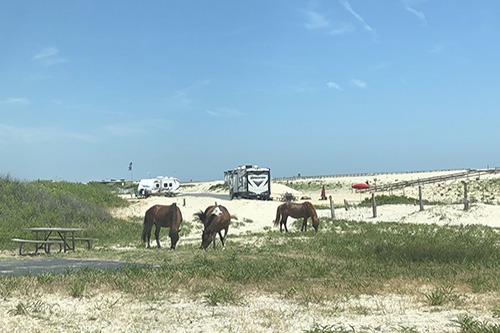
The Department of Natural Resources is preparing climate resilient land plans for the state’s most climate-impacted parks and public lands. These reports outline climate impacts to resources and provide recommendations for building resilience and are resulting in on-the-ground resilience projects.
As outlined in the
Maryland Climate Change Planning website, the plans include recommendations to monitor dunes and improve infrastructure at
Assateague State Park; restore wetlands and increase vegetative buffers in
Browns Branch Wildlife Management Area; and repair roads and culverts in
Pocomoke State Forest. Additional plans are underway for Point Lookout State Park and other areas.
Return to Top
Restoration in Our Parks
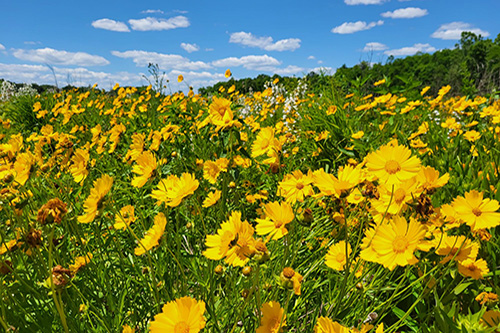
The public lands that DNR manages are being actively restored to combat climate change impacts. The department and partners have installed living shorelines at sites like the Sassafras Natural Resource Management Area and
Assateague State Park.
The 5 Million Trees Initiative is supporting tree plantings at
Tuckahoe State Park,
Seneca Creek State Park , and
Sang Run State Park, reforesting hundreds of acres at nearly fifteen Parks across the state.
Parks like Bohemia River State Park are converting agricultural fields to grasslands and meadows, while also planting riparian buffers to protect waterways.
Rocky Gap State Park is removing fields from mowing and planting native wildflowers for pollinators and wildlife. At
Cunningham Falls State Park and elsewhere, staff are working to control invasive species that are becoming more prevalent with climate change.
Return to Top
Infrastructure Resilience

Efforts are underway to adapt state infrastructure on public lands to the effects of climate change. That includes work to relocate the
Fair Hill Natural Resource Management Area parking lot out of a floodplain, as well as work converting tiers of a parking lot from blacktop to grass in
Rocky Gap State Park, where the drainage system for the lot was also redesigned to better manage stormwater runoff.
Return to Top
Regenerative and Resilient Agriculture
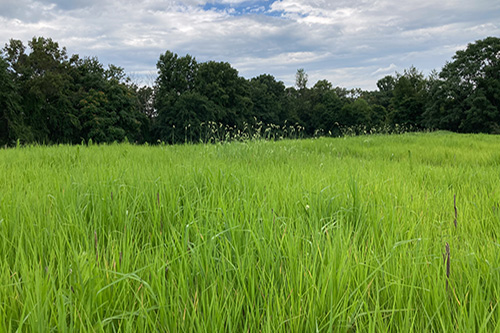
In partnership with the Department of Agriculture, DNR is working to expand regenerative farming on state agricultural leases. Regenerative farms, like
Beauty Blooms Farm in
Patuxent River State Park , are beneficial for the land and mitigate climate change impacts by improving soil health and embracing species diversity.
Public lands with agricultural leases provide a proving ground where the state and its partners can model responsible farming techniques. At
Fair Hill Natural Resources Management Area, Maryland has established a delayed harvest zone on the park’s leased hay fields to reduce carbon emissions and conserve valuable grassland habitat.
Return to Top
Renewable Energy
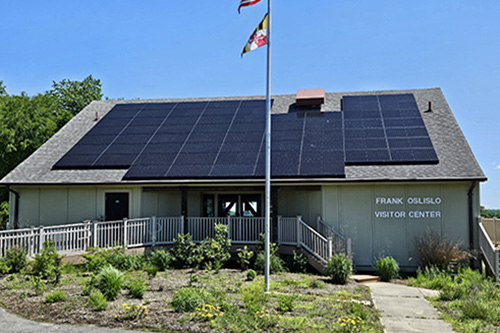
DNR is working to incorporate renewable energy infrastructure in Maryland’s parks and state lands. Solar panels have been installed in lands including
Deep Creek Lake,
Assateauge, and
Sandy Point state parks, as well as
Merkle and
Fair Hill natural resource management areas. Park Service maintenance facilities all have electric vehicle charging stations for DNR fleet vehicles, and parks are electrifying their fleets with electric UTVs. Public EV chargers are also available at several parks and the department is pursuing opportunities to increase charger availability within parks. At
Cypress Branch and
Greenbrier, state parks are reducing fossil fuel use by using wood furnaces for heating.
Return to Top
State Land Preservation
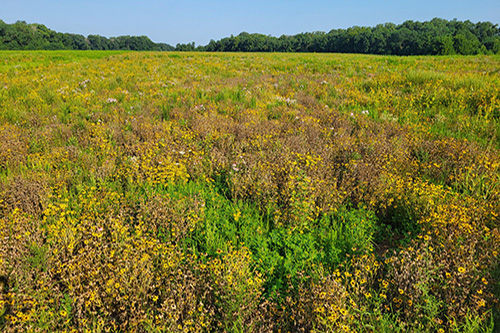
Program Open Space Stateside preserves natural areas for public recreation and watershed and wildlife protection across Maryland through fee simple and conservation easement acquisitions. Fee simple acquisitions are managed by the department as State Parks, Forests, and Wildlife and Fisheries Management Areas. The acquisition of additional land to be managed by the Department supports DNR’s work to combat climate change impacts.